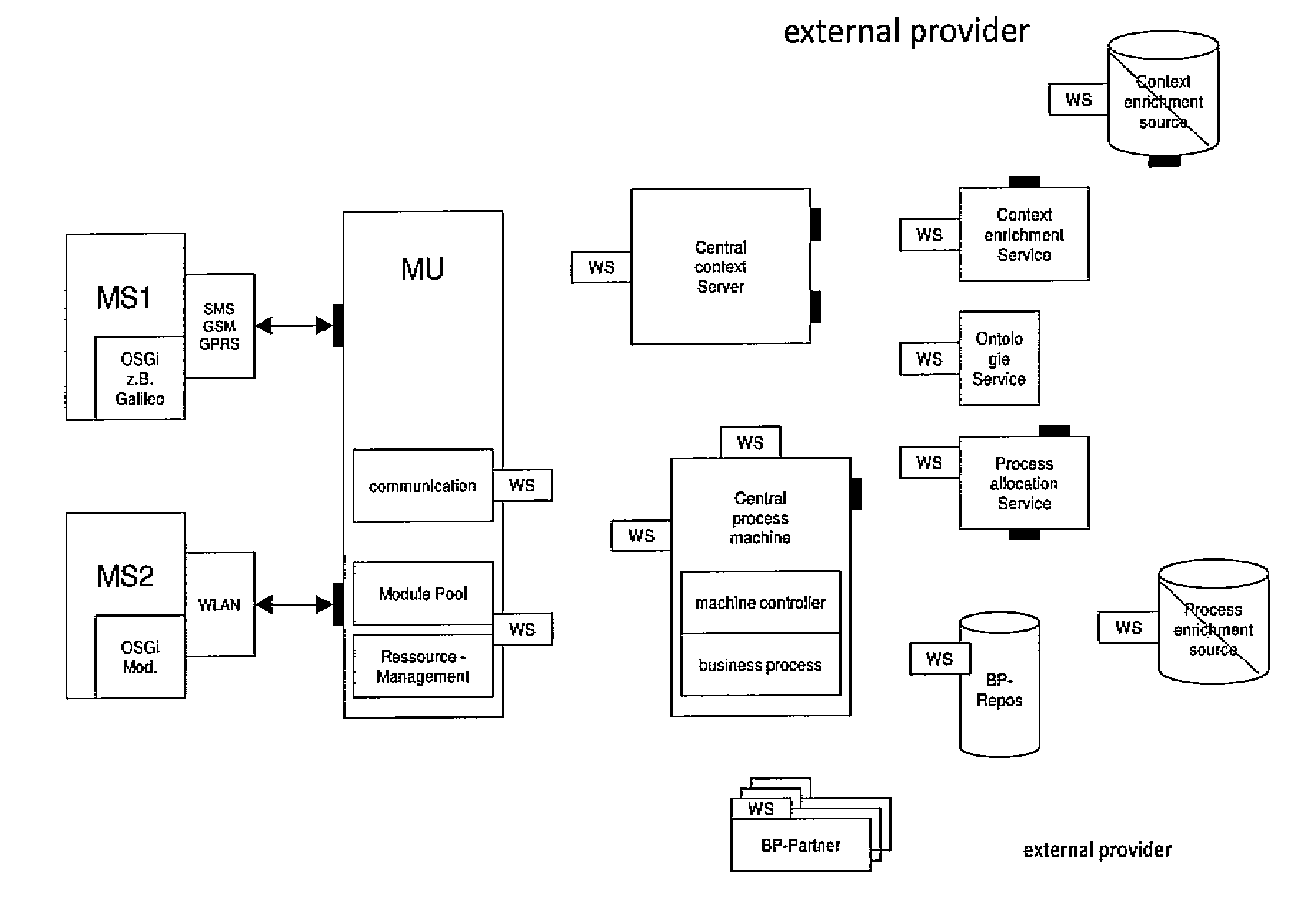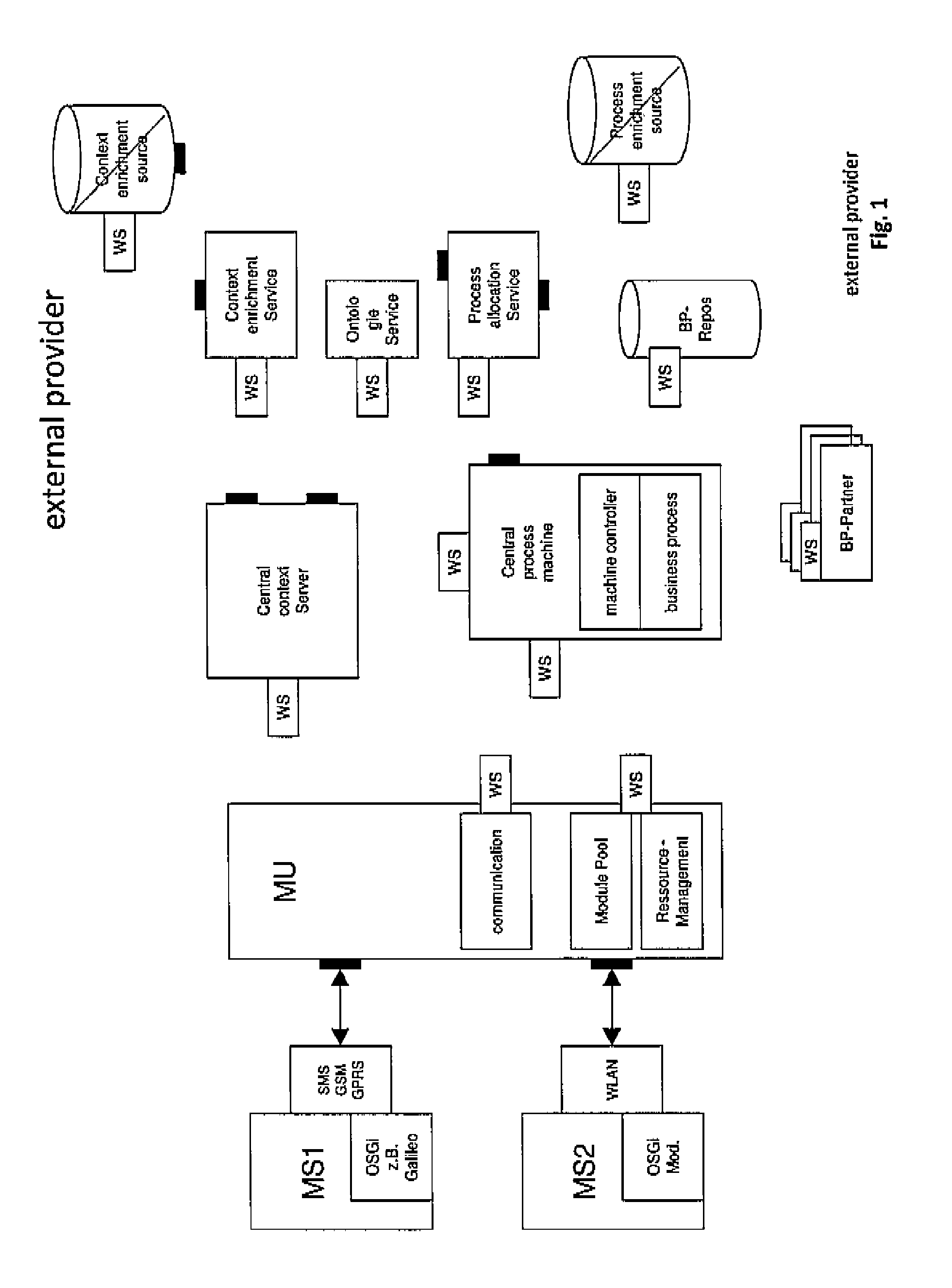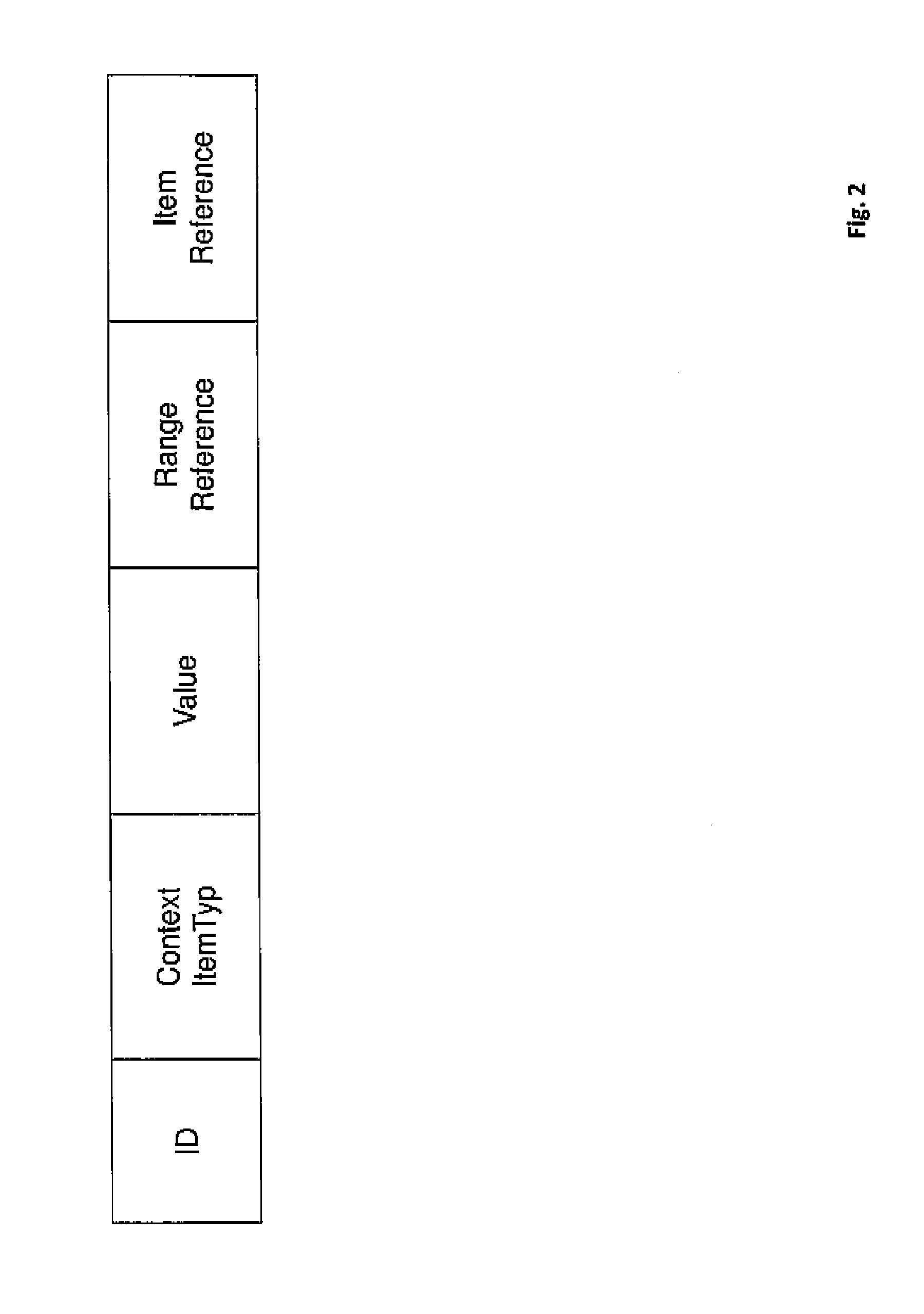Method and device for the context-driven integration of context-variable systems into process sequences
- Summary
- Abstract
- Description
- Claims
- Application Information
AI Technical Summary
Benefits of technology
Problems solved by technology
Method used
Image
Examples
Embodiment Construction
[0019]The invention also uses its own approach for the basic modelling of the context. In order to obtain a flexible and at the same time universal usable description of the very different types of context information, the possible types (such as location, time, filling level of the fuel tank, temperature of the transmission, personal preferences of a user, etc.) are defined within an ontology. The context itself is modelled as a graph of context items. Each context item has the structure shown in FIG. 2. The ID serves to uniquely identify the item. The context item type notes the ontology value representing the type of the context information described in the present document, for example physical location, fuel level, restaurant preferences. The specific values, such as degrees of length and width, are in the Values field. In the case of physical context information, the following field contains range reference indications as to when a value change leads to a new item of logical c...
PUM
 Login to View More
Login to View More Abstract
Description
Claims
Application Information
 Login to View More
Login to View More - R&D
- Intellectual Property
- Life Sciences
- Materials
- Tech Scout
- Unparalleled Data Quality
- Higher Quality Content
- 60% Fewer Hallucinations
Browse by: Latest US Patents, China's latest patents, Technical Efficacy Thesaurus, Application Domain, Technology Topic, Popular Technical Reports.
© 2025 PatSnap. All rights reserved.Legal|Privacy policy|Modern Slavery Act Transparency Statement|Sitemap|About US| Contact US: help@patsnap.com



